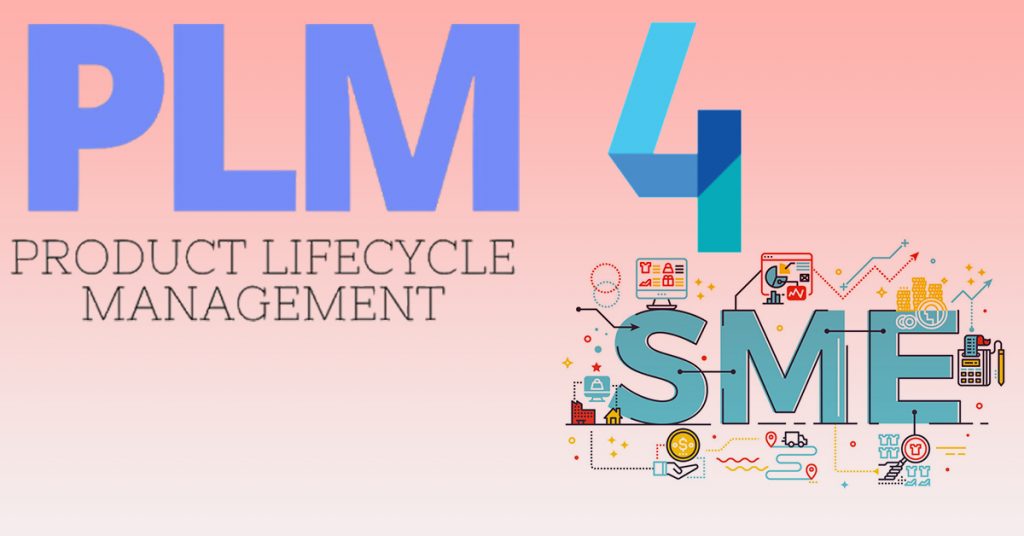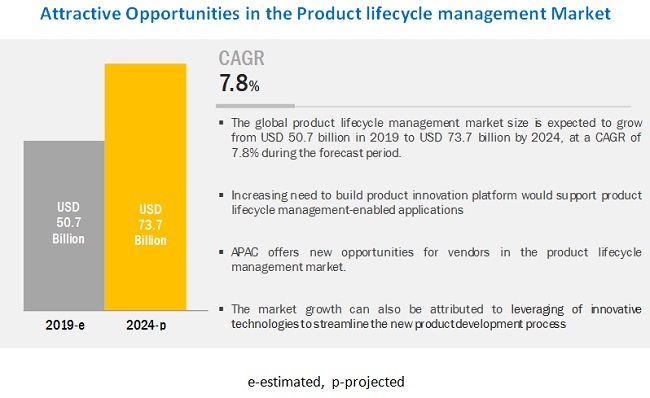
Small and Medium enterprise sectors is one of the fastest growing across the industrial sectors. Important key component of any product is Bill of Material (BOM) and it is considered automating BOM management is the first step towards digital transformation. PLM for SME has been growing tremendously across all the industrial verticals to automate the engineering change, validation and approval process, to speed up the cycle time and improve product quality.
According to Forbes Business Insight PLM Market size stood at USD 16.76 Billion in 2018 is expected to reach USD 26.73 Billion by 2026, exhibiting a CAGR of 6.3% during 2019-2026.

With the ever-greater focus on innovation as well as time-to-market agility, the obstacles that were as soon as stumbling blocks for the OEM’s are now bearing down on SME’s as they seek to enhance product development along with engineering processes in an effort to gain a competitive edge.
Some of the reasons for small to medium manufacturing businesses to move for PLM is as
- Streamlined Product Development: PLM provides a centralized platform to manage all aspects of product development, from design to manufacturing. It ensures effective collaboration between different teams, such as engineers, designers, and suppliers, resulting in improved product quality, reduced errors, and faster time-to-market.
- Improved Communication and Collaboration: SMEs often have dispersed teams working on different aspects of product development. PLM facilitates seamless communication and collaboration by providing a shared space for teams to exchange information, track progress, and provide feedback in real-time, eliminating silos and improves overall efficiency.
- Enhanced Product Data Management: Managing product data can be challenging, especially as a business grows. PLM offers a structured approach to organize and manage product data throughout its lifecycle. It centralizes product information, including design files, specifications, bills of materials, and manufacturing process instructions, ensuring data integrity and accessibility.
- Efficient Change Management: Change is inevitable in product development, whether it’s design modifications, material updates, or regulatory compliance changes. PLM helps SMEs to effectively manage and track these changes. It ensures that all stakeholders are notified, approvals are obtained, and the necessary updates are implemented smoothly, minimizing errors and avoiding costly rework.
- Supply Chain Optimization: It provides visibility into the entire supply chain, enabling to make informed decisions regarding procurement, inventory management, and supplier relationships. With accurate and real-time data, businesses can optimize their supply chain processes, reduce costs, and improve delivery timelines.
- Product Quality and Customer Satisfaction: PLM enables businesses to focus on improving product quality, resulting in enhanced customer satisfaction. By tracking and analyzing data throughout the product lifecycle, businesses can identify areas for improvement, implement corrective actions, and gather valuable customer feedback for future product iterations.
Significant aspects expected to drive the development of the industries include expanding concentrate on creating groundbreaking smart products and also factories, enhancing requirement to build product technology system would certainly sustain PLM enabled applications, and also growing demand for saas based cloud PLM services for scalability and protected IT facilities. Onsite implementation of PLM options has a variety of downsides, including details infrastructure needs and high deployment expenses, which could obstruct the adoption of PLM services. To conquer this difficulty, lots of PLM service providers have actually started providing cloud implementations with subscription designs to minimize the general expense of deployment. Check out our successful implementation of OpenBOM for Nandan GSE.
One immediate return of value and investment can be recognized in a world where time is cash, execution of an efficient PLM system can save a great deal of time which is otherwise invested in spread sheets, e-mails, document sharing, and so on. Moving information manually between these programs, not to discuss the numerous e-mail chains is extremely time consuming. PLM application brings all of these under one umbrella enhancing effectiveness and also synchronization. It likewise conserves time invested in fixing manual mistakes. These mistakes might cost companies a significant bargain of money.
Final Thoughts:
So how to start? Start defining a strategy of how PLM for SME is going to provide return of value to the organization. PLM will certainly suggest different points to various organization due to the fact that they differ in how they produce, disperse, sell, and support products. Beginning with recognizing shortages in existing procedures. First the process automation such as launch of BOM to making along with automated change procedure besides having a straight linking in between PLM with ERP.

